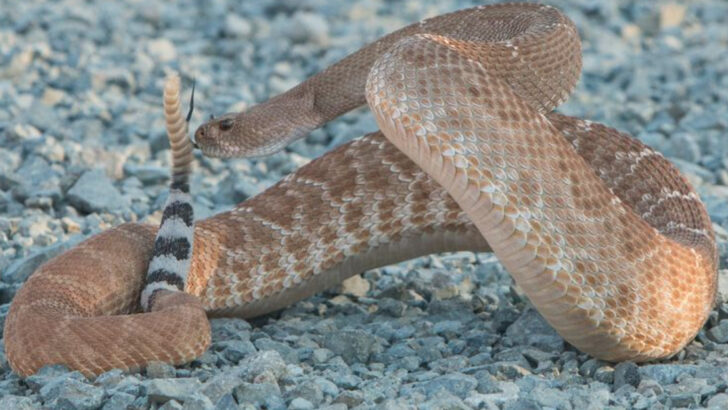Some snakes bite—and some make your blood curdle just by looking at them.
Welcome to America’s wild side, where fangs flash fast and venom runs deep. These aren’t your average backyard garter snakes. We’re talking coiled killers with names like cottonmouth, copperhead, and the ever-polite but deadly rattlesnake.
They slither through swamps, deserts, forests, and sometimes your hiking trail. They don’t want trouble—but cross them, and you might be the one limping away with a story (and an ER bill).
This list isn’t here to scare you (okay, maybe a little). It’s here to introduce you to the 20 snakes that rule the shadows of the U.S., each one armed with just enough venom and attitude to make them unforgettable.
Eastern Diamondback Rattlesnake
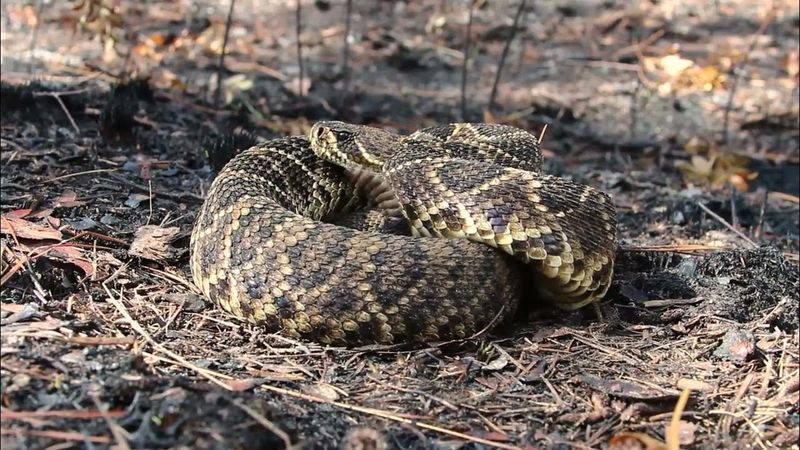
The Eastern Diamondback Rattlesnake, with its imposing size, is a formidable presence in the southeastern United States. Known for its striking diamond pattern, this snake resides mostly in pine flatwoods and sandy woodlands. Its venom can be deadly, so caution is essential when exploring its habitat.
Often spotted basking in the sun, this snake is both a master of camouflage and a silent predator. While it prefers to avoid humans, it will defend itself if threatened. Remember, its rattle serves as a warning, not an invitation.
Did you know? It’s the largest rattlesnake species in the world.
Western Diamondback Rattlesnake
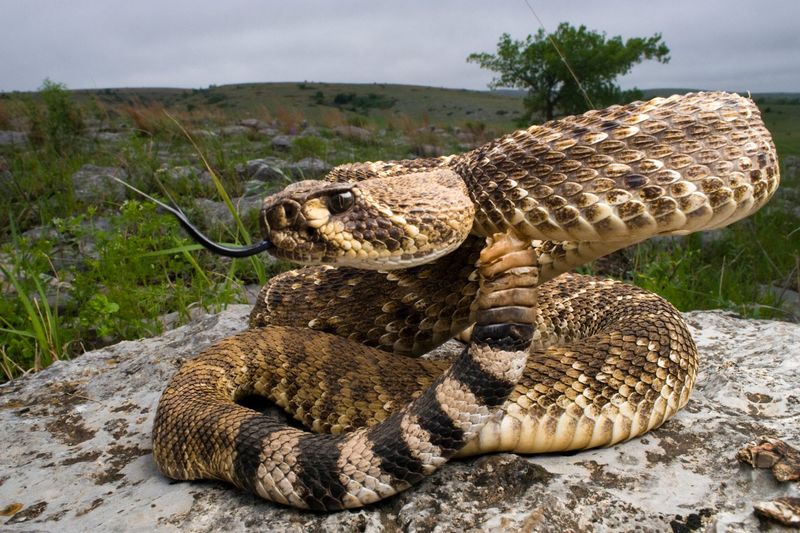
The Western Diamondback Rattlesnake is quintessentially American, a common sight in the deserts of the southwestern United States. Its unique diamond patterns make it a mesmerizing, albeit dangerous, creature.
While its venomous bite can be lethal, this snake is not typically aggressive. Spotting one in the wild is a reminder of nature’s raw power and beauty. Whether coiled under a cactus or moving stealthily across the desert floor, it commands respect.
Fun fact: This rattlesnake is a frequent star in Western movies, symbolizing the untamed wild.
Copperhead
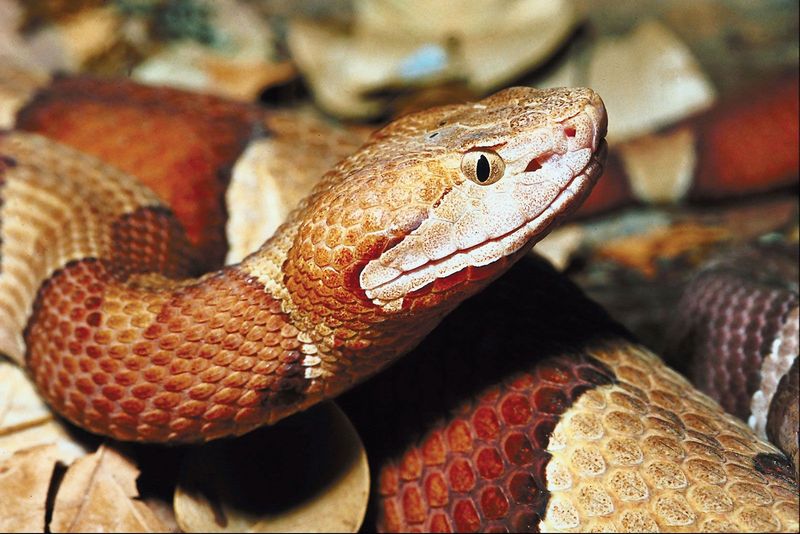
Copperheads, with their coppery appearance, are masters of disguise among fallen leaves. Found mostly in eastern and central U.S., these snakes are relatively small but pack a punch with their venom.
Their bites are rarely fatal to humans, though they can cause significant discomfort. Typically, they rely on their camouflage to remain unnoticed rather than confrontation.
Did you know? Copperheads have a peculiar defense mechanism – they emit a musky odor when threatened, alerting potential predators of their presence.
Cottonmouth (Water Moccasin)
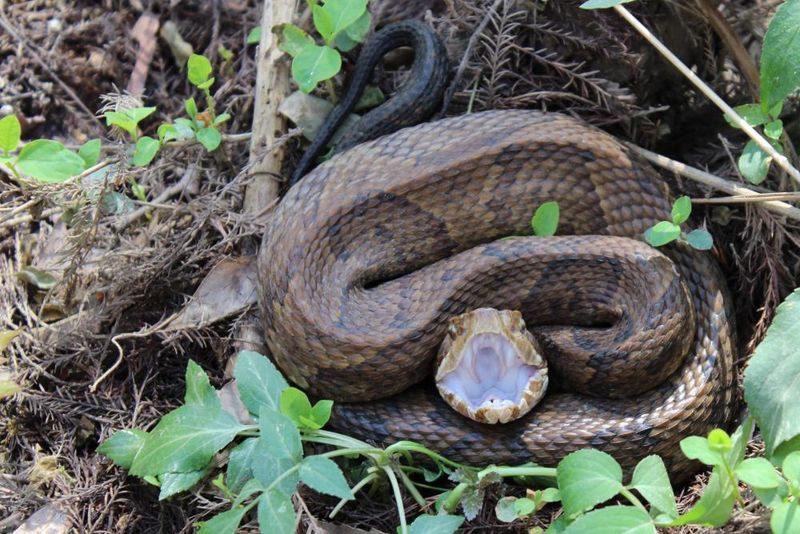
The Cottonmouth, also known as the Water Moccasin, is infamous for its defensive display. With a dramatic gape showing its white mouth, this snake is both fascinating and fearsome.
Residing in southeastern U.S., it thrives in aquatic environments like swamps and rivers. While its bite is venomous, fatalities are rare with prompt medical attention.
Interesting tidbit: Despite its aggressive reputation, the Cottonmouth prefers to escape rather than engage. Spotting one swimming sinuously through water is a sight to behold.
Coral Snake
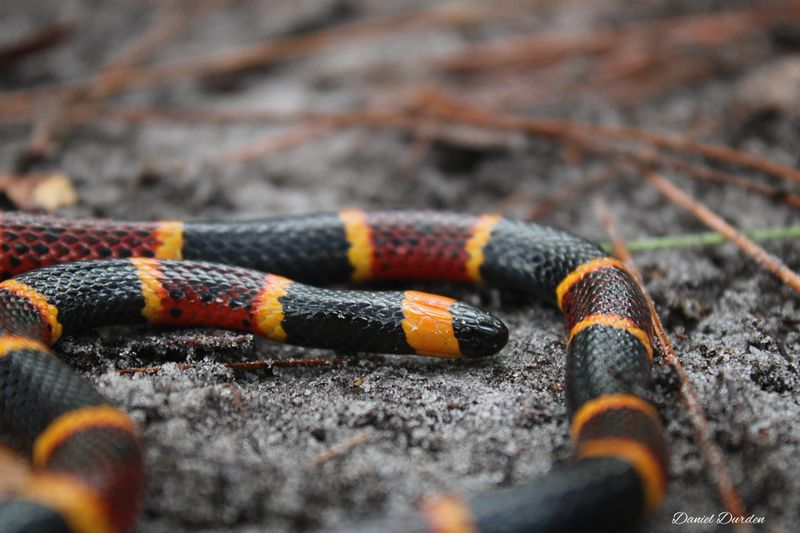
The Coral Snake, with its vibrant bands of red, yellow, and black, is a true spectacle in the southeastern U.S. forests. This snake’s mantra could be “look but don’t touch,” as its venom is potent and requires immediate medical care if bitten.
Coral Snakes are reclusive, often hiding under leaves or logs. Their striking colors serve as a warning to would-be predators.
Remember the rhyme: “Red touch yellow, kill a fellow; red touch black, safe for Jack,” but always err on the side of caution.
Timber Rattlesnake
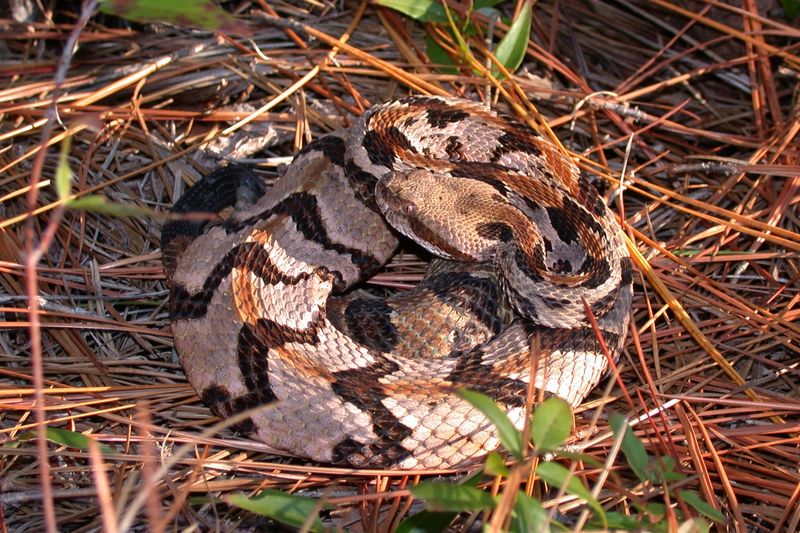
Timber Rattlesnakes, with their subdued colors, are native to the eastern United States. Their habitat often includes deciduous forests, where they blend seamlessly with the leaf litter.
These snakes have a calm disposition yet can deliver a potent bite if provoked. Their presence highlights the delicate balance of forest ecosystems.
Witnessing a Timber Rattlesnake in its natural setting is a reminder of the wild within the woodlands. Despite their fearsome reputation, they are essential in controlling rodent populations.
Mojave Rattlesnake
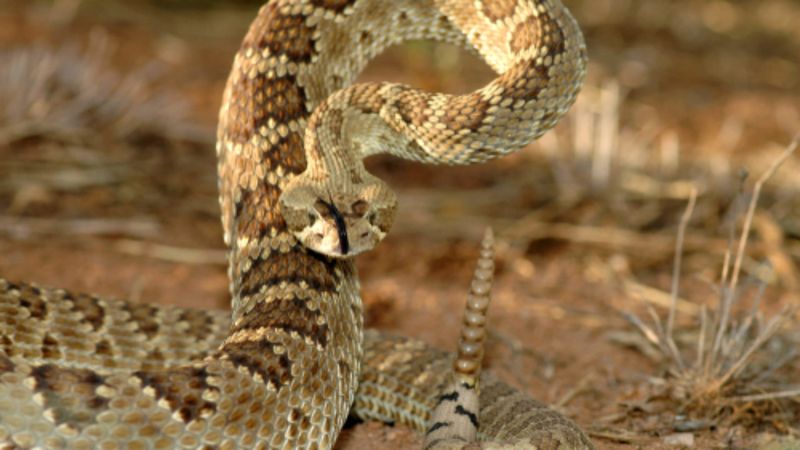
The Mojave Rattlesnake, found in the arid deserts of the southwestern U.S., is often dubbed the most venomous rattlesnake. Its potent venom has earned it a fearsome reputation.
Despite its lethality, this snake is usually shy and avoids humans. Its pale coloration helps it merge with the sandy desert terrain, where it preys on small mammals.
Did you know? The Mojave rattler has a unique warning sound, a rapid rattle that echoes through the desert silence, a sound synonymous with danger.
Eastern Coral Snake
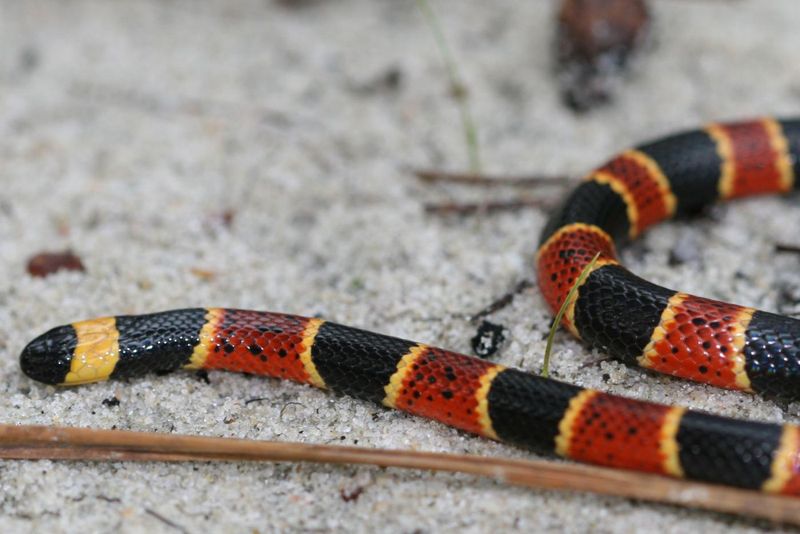
The Eastern Coral Snake is a vision of vibrant colors, flaunting its bands of red, yellow, and black. Dwelling predominantly in the southeastern U.S., this snake prefers wooded, sandy, and marshy areas.
Though its bite is rare, it is medically significant, requiring immediate attention. This elusive snake often goes unnoticed, blending into its habitat.
Remember: Even though they are not prone to bite, their venomous nature is not to be underestimated. Their beauty in the wild is best appreciated from a distance.
Red Diamond Rattlesnake
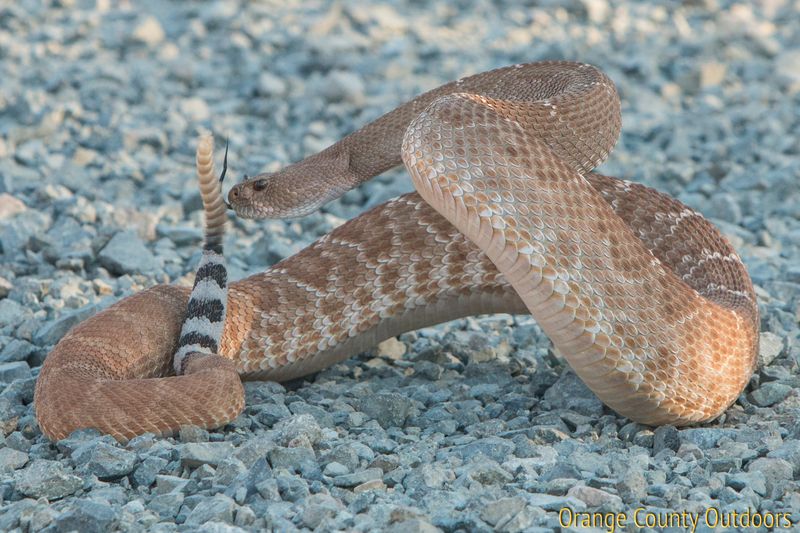
The Red Diamond Rattlesnake, primarily found in the coastal regions of Southern California, is a true sun lover. Its striking reddish diamonds set it apart from other rattlers.
This snake is relatively docile compared to its kin but can still deliver a serious bite. Preferring rocky and brushy areas, it plays a crucial role in controlling local rodent populations.
A unique trait of this rattler is its tendency to bask openly, making it one of the more visible species to encounter.
Desert Horned Viper
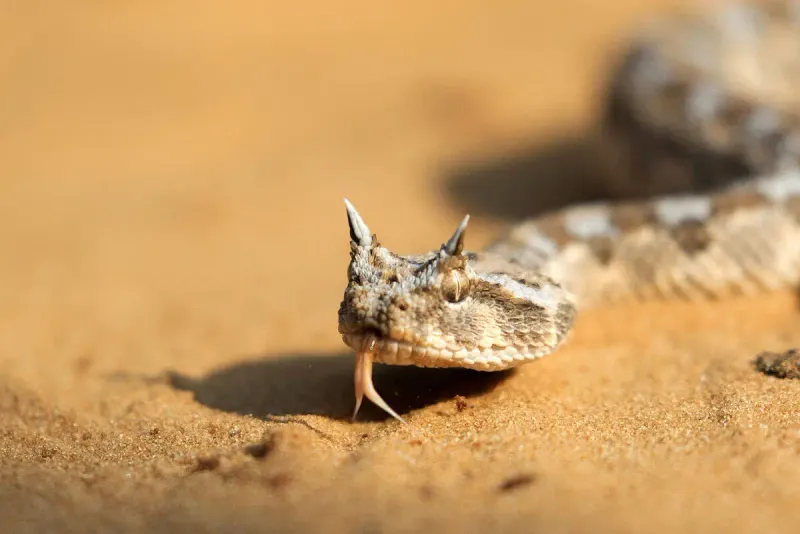
Not native to America, but often discussed in the context of dangerous snakes is the Desert Horned Viper. Known for its ‘horns’ above the eyes, this snake is a resident of the sandy deserts.
Its sidewinding motion across the dunes is a mesmerizing spectacle. Although not aggressive, its venom is potent enough to warrant respect and caution.
Interestingly, this viper’s unique movement helps it navigate and hunt in the scorching desert environment, making it a fascinating study of adaptation.
Sidewinder Rattlesnake
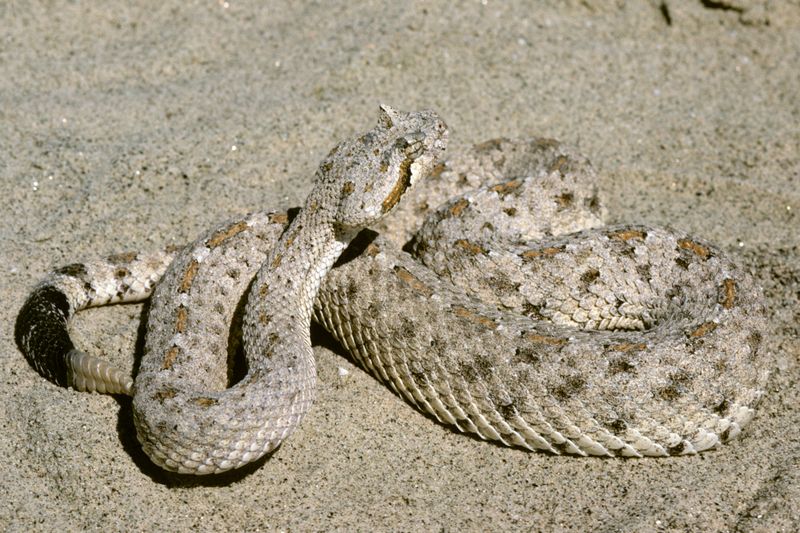
The Sidewinder Rattlesnake, known for its unique sideways motion, is a marvel of nature’s adaptability. Found in the sandy deserts of the southwestern U.S., it leaves behind a trail of J-shaped tracks.
This snake’s venom is relatively mild, but its bite demands attention. Its color blends with the sand, making it a stealthy predator.
Did you know? The sidewinder’s sideways movement is not just for show; it minimizes contact with the hot sand, an ingenious survival tactic in its harsh environment.
Black-tailed Rattlesnake
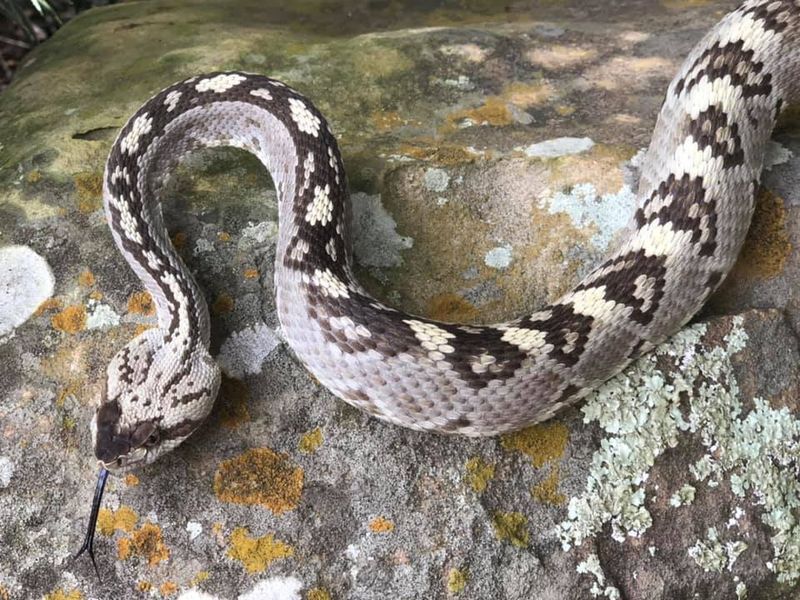
The Black-tailed Rattlesnake, with its distinctive dark tail, is commonly found in the rocky terrains of the southwestern U.S. It is a medium-sized rattler known for its striking appearance.
Typically shy, this snake avoids human interaction but will strike if cornered. Its diet mainly consists of small mammals and birds, contributing to ecological balance.
Its impressive camouflage among rocks and foliage makes it a challenge to spot, an example of nature’s perfect design in action.
Speckled Rattlesnake
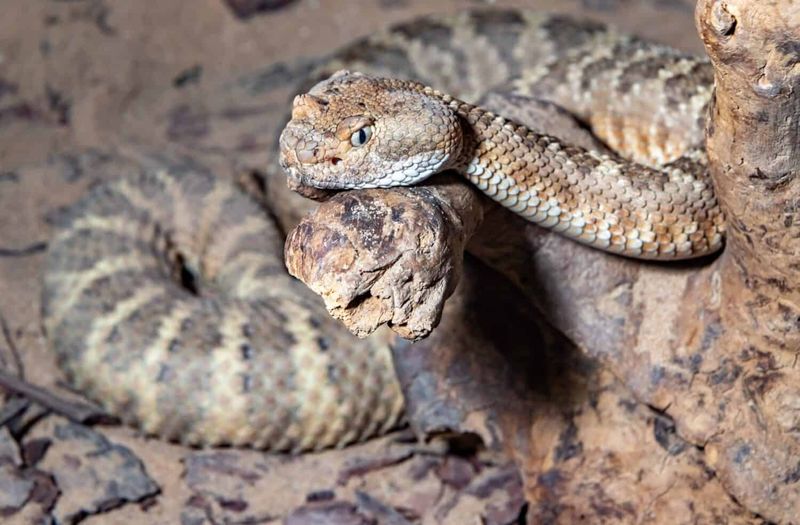
The Speckled Rattlesnake, aptly named for its speckled skin, thrives in the rocky deserts of the southwestern United States. Its camouflage is so effective that it often goes unnoticed.
This snake is not aggressive, but its venomous bite requires prompt medical treatment. Its beauty lies in its subtlety, blending seamlessly with its surroundings.
Fun fact: The Speckled Rattlesnake’s coloration can vary significantly, matching the rocks of its local habitat, a true testament to evolutionary adaptation.
Canebrake Rattlesnake

The Canebrake Rattlesnake, a variant of the Timber Rattlesnake, is found in the southeastern U.S. Its habitat includes swamps, forests, and cane thickets.
Recognizable by its distinct stripe along the back, this snake is a sight to see when coiled among fallen leaves or dense underbrush. Though venomous, it is generally not aggressive toward humans.
Did you know? The Canebrake’s rattle is often quieter than other rattlers, making it an even more elusive presence in its natural environment.
Prairie Rattlesnake

The Prairie Rattlesnake roams the open grasslands from Canada down into northern Mexico. Its muted colors allow it to blend seamlessly into the prairies.
Despite its fearsome reputation, it is generally shy and prefers retreat over confrontation. Its venom, although potent, is rarely fatal with swift treatment.
Fun fact: The Prairie Rattlesnake plays a crucial role in controlling rodent populations, which helps maintain the ecological balance of the grasslands.
Eastern Hognose Snake
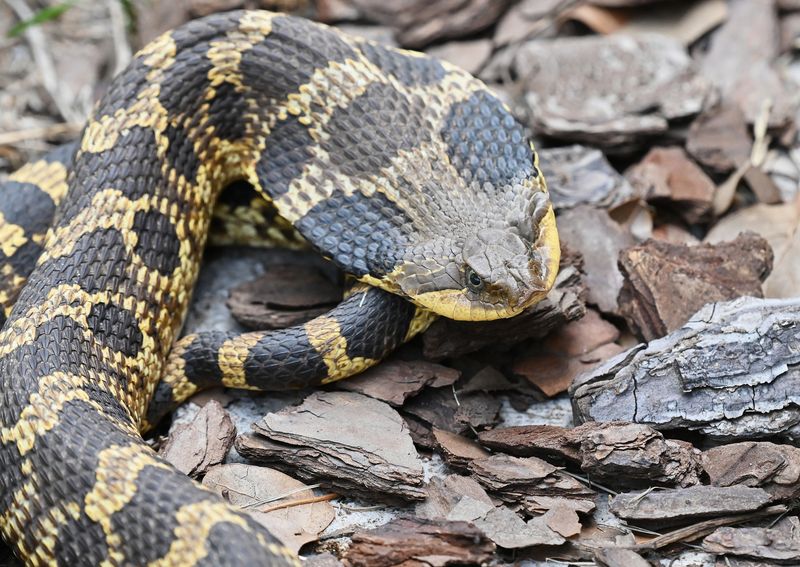
The Eastern Hognose Snake, often mistaken for its more dangerous relatives, is a true performer of the animal kingdom. Found throughout the eastern United States, it’s known for its theatrical defensive displays that include flattening its neck into a hood, much like a cobra.
Though its appearance can be intimidating, the Eastern Hognose is non-venomous and harmless to humans. It prefers sandy soils where it can burrow and hunt for toads, its favorite delicacy.
Curiously, if its theatrical posturing doesn’t deter a threat, the Eastern Hognose might play dead, flipping onto its back and even emitting a foul smell. A true drama king of the snake world!
Eastern Massasauga
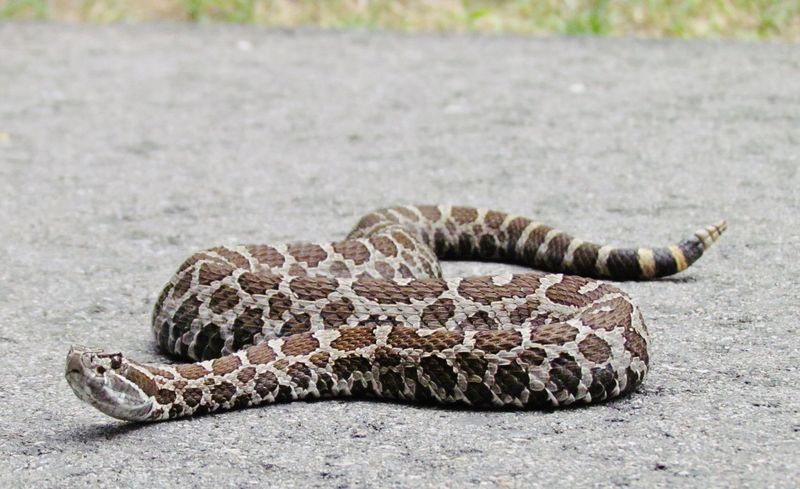
The Eastern Massasauga, a smaller rattlesnake, prefers wetland habitats in the Midwest. Its subtle gray and brown patterns aid its concealment among grasses.
This snake is shy and typically avoids humans, but its venom can be dangerous. Conservation efforts are in place to protect its declining populations.
Did you know? The Massasauga’s name comes from the Chippewa language, meaning “great river mouth,” aptly describing its wetland home.
Pygmy Rattlesnake
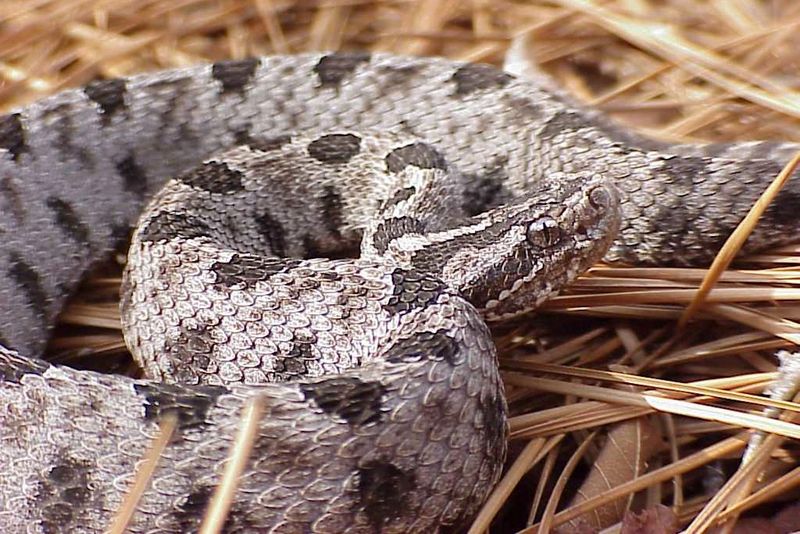
The Pygmy Rattlesnake, true to its name, is a small but formidable snake found in the southeastern U.S. and along the Gulf Coast.
Despite its size, this snake possesses a potent venom. It tends to blend into its surroundings, with colors that mimic dry leaves and forest debris.
Fun fact: The rattle of a Pygmy Rattlesnake is so tiny, it often goes unheard, adding to its mysterious nature in the wild.
Arizona Black Rattlesnake
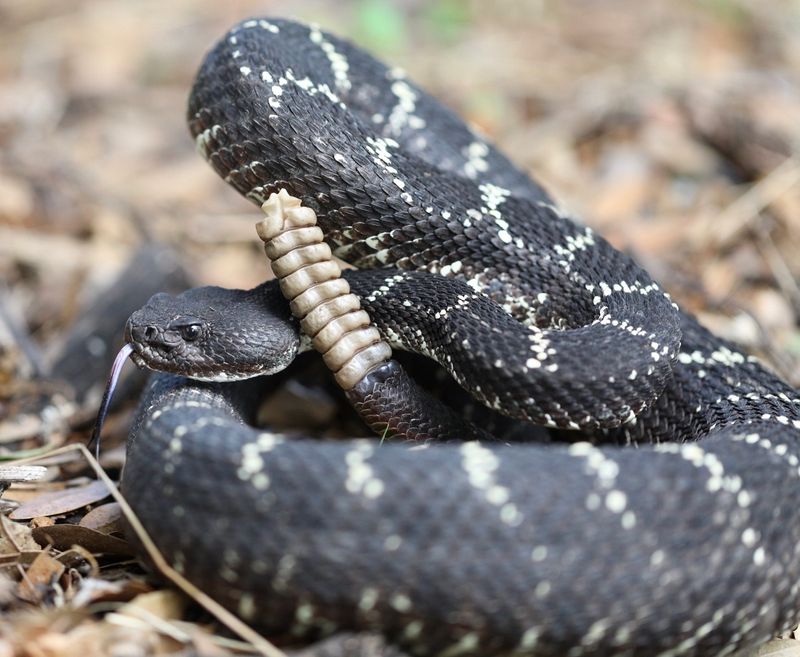
Beneath the relentless sun of the southwestern United States, the Arizona Black Rattlesnake commands its territory with an air of authority. Its dark, almost obsidian scales blend seamlessly into the rocky landscapes it calls home.
This snake is both a marvel and a menace, with a potent venom that commands respect. However, it’s typically non-aggressive towards humans unless provoked, preferring to warn with its rattle than to strike.
A fascinating fact: The Arizona Black Rattlesnake undergoes a dramatic color change as it ages, starting from a lighter color in youth to a darker, more intimidating hue in adulthood. Nature’s own metamorphosis!
Mud Snake
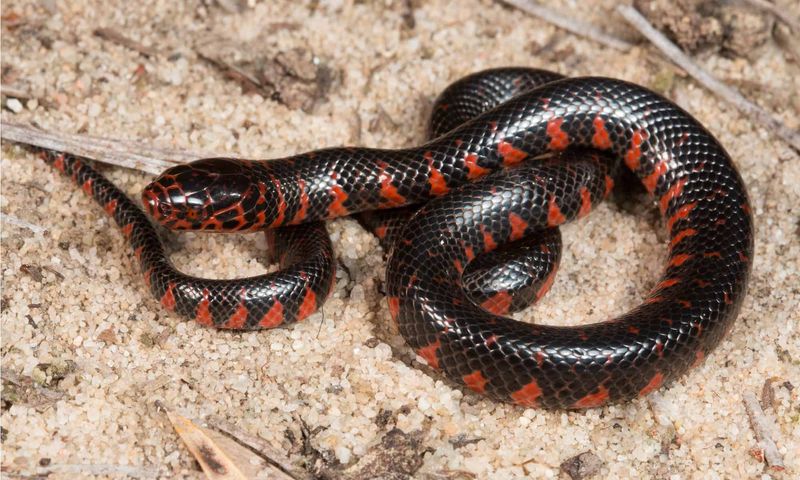
The Mud Snake is a mysterious inhabitant of the southeastern swamps, known for its glossy black back and vibrant red belly. This non-venomous snake is both elusive and intriguing, often found in aquatic environments where it hunts for its favorite prey, the amphiuma.
Despite its rather ominous appearance, the Mud Snake is harmless to humans. It uses its sharp tail tip to prod and catch slippery prey but remains shy and avoids human interaction. This elusive creature plays its part in the balance of its ecosystem, keeping the amphibian population in check.
If you’re canoeing through the murky waters of Georgia or Alabama, you might catch a glimpse of this shiny serpent gliding gracefully through its habitat. It’s a peaceful presence in an otherwise wild and untamed landscape.

